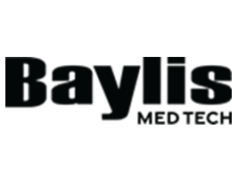 According to the AMBUVASC randomised controlled trial (RCT), outpatient hospitalisation is not cost-effective compared with inpatient hospitalisation for endovascular repair of patients with claudication at a €50,000/quality-adjusted life year (QALY) threshold. Yann Gouëffic (Groupement Hôpitalier Paris St Joseph, Paris, France) and colleagues caution against generalisation of their conclusion. “The findings depend on the specific organisation in France,” they state, “where the two procedures are performed within the same institution”.
According to the AMBUVASC randomised controlled trial (RCT), outpatient hospitalisation is not cost-effective compared with inpatient hospitalisation for endovascular repair of patients with claudication at a €50,000/quality-adjusted life year (QALY) threshold. Yann Gouëffic (Groupement Hôpitalier Paris St Joseph, Paris, France) and colleagues caution against generalisation of their conclusion. “The findings depend on the specific organisation in France,” they state, “where the two procedures are performed within the same institution”.
Writing in an online European Journal of Vascular and Endovascular Surgery (EJVES) article, the authors detail that AMBUVASC was a national, multicentre, prospective RCT conducted in nine public and two private French centres. The primary endpoint was the incremental cost-effectiveness ratio, defined by cost per QALY, and analysis was conducted from a societal perspective, excluding indirect costs, and considering a one-month time horizon, they state.
“The worldwide prevalence of peripheral arterial occlusive disease is rising,” the authors begin, highlighting population ageing and greater prevalence of diabetes and renal failure as reasons behind this. In the context of “ever growing pressure on the financing of healthcare expenditures,” this upward trend in incidence highlights a need for solutions that will “minimise use of resources without compromising the quality, safety, and effectiveness of patient care,” the authors write.
Due to “continuous improvements in technological and minimally invasive approaches,” Gouëffic and colleagues state that endovascular repair of LEAD has become widespread over the last decade and “has the potential to meet the stated needs—controlled hospital expense and quick patient recovery—through same-day hospital discharges”.
Within this shift towards endovascular treatment, the authors highlight a “major thrust” in the USA to move patients out of hospital rooms and into day hospitals and physicians’ offices for endovascular interventions to treat lower limb peripheral arterial occlusive disease. However, they stress that there is a lack of evidence about the cost-effectiveness of this trend.
The goal of this study, therefore, was to assess the cost-effectiveness of outpatient compared to inpatient hospitalisation of endovascular repair of LEAD.
From 16 February 2016 to May 2017, Gouëffic et al randomised 160 patients to either outpatient hospitalisation (n=80) or inpatient hospitalisation (n=80). They then performed a modified intention-to-treat analysis with 153 patients (outpatient hospitalisation: n=76; inpatient hospitalisation: n=77). The investigators note that the patients mainly presented with intermittent claudication (outpatient arm: 97%; inpatient arm: 92%).
The authors report that rates of perioperative complications were 20% (15 events) and 18% (14 events) for the outpatient and inpatient arms, respectively (p=0.81). They add that overall costs (difference: €187.83, 95% confidence interval [CI] -275.68–651.34) and QALYs (difference: 0.00277; 95% CI -0.00237–0.00791) were higher for outpatients due to more readmissions than the inpatient arm.
Furthermore, Gouëffic and colleagues relay that the incremental cost-effectiveness ratio was €67,741 per QALY gained for the base case analysis with missing data imputed using multiple imputation by predictive mean matching.
Overall, the investigators found that the outpatient procedure was not cost-effective for a willingness to pay €50,000 per QALY and the probability of being cost-effective was only 59% for a €100,000/QALY threshold.
According to the authors, AMBUVASC was the first cost-effectiveness analysis associated with a prospective randomised controlled trial in France that compared outpatient versus inpatient hospitalisation for the endovascular repair of LEAD.
In the discussion of their findings, Gouëffic et al note that the cost differences were observed to be small, which “makes them sensitive to the precision of the estimation of hospital hotel costs (other than those of the intervention)”. They remark that this calls for further research to investigate the reasons for readmissions and to consolidate the estimation of the differences in initial hospital costs between outpatient and inpatient treatment before a definitive conclusion can be reached.













